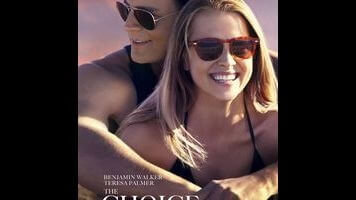When it comes to a recognizable house style, Marvel and Pixar have nothing on the ever-expanding cinematic universe of Nicholas Sparks. Forget for a second the overlap in story specifics. To just skim an adaptation of one of the author’s bestselling romance novels is to be greeted again and again with the same set of postcard images, from a glorious sunset over Carolina water to wind chimes and tree swings swaying gently in the late-summer breeze. There are 10 of these movies and they all look more or less the same, no matter who’s behind the camera. The Choice, for example, was directed by Ross Katz, who made last year’s terminally mild Nick Kroll dram-com Adult Beginners. But it could just as well have been helmed by Scott Hicks or Lasse Hallström or George Tillman Jr., to name a few of the filmmakers whose individual styles have been flattened into anonymity by the Sparks brand.
The plots don’t change much either. Granted, The Choice isn’t as structurally ambitious as last year’s The Longest Ride; after flashing back seven years from a hospital-set prologue—as if audiences need to be warned that a Sparks story will climax in urgent care—the film commences with the familiar, linear tale of a well-off Southern girl swept off her feet by a working-class stud. Travis (Benjamin Walker) is a laid-back ladykiller and good-ol’-boy veterinarian in the picturesque beach town of Beaufort. Gabby (Teresa Palmer) is the uptight medical student who moves in next door. She’s got rich parents and a sweetly bland doctor beau (Tom Welling). He’s got a dead mother, a widowed father (Tom Wilkinson), and an on-again, off-again squeeze (Alexandra Daddario, still waiting on a real role). Gabby believes in God. Travis does not. Luckily, they both have fashion-model good looks and adorable pooches in common.
Variation is relative on the Sparks assembly line; minor tweaks can look major when talking about this unofficial franchise of tacky tearjerkers. If Palmer perfectly fits the profile of a waifish Sparks heroine, Walker—with his dark locks and young-Liam Neeson features—represents an ever-so-slight deviation. The two actors do what they can to pump passion into a cookie-cutter, opposites-attract courtship. The dialogue does them no favors: Sparks sometimes confuses catchphrases for the pet language of lovers, in this case turning “You bother me” into a groan-worthy refrain. As for Katz, he doesn’t do much to distinguish his 2016 model from the 2015 one; mostly, the hired-gun director passes wooing duties to the location scouts, with a light musical assist from The National, Band Of Horses, and a few other purveyors of indie-rock earnestness.
There’s a reason these movies are so popular, just as there’s nothing inherently wrong with wanting to spend every Valentine’s Day in perpetuity watching beautiful people canoodle at the town carnival, fall head over heels at the lake, and weather the misfortune of a dire medical diagnosis. But Sparks and those translating his vision to the screen meet that demand with a dispiritingly interchangeable supply. How many times, really, can someone repackage the same generic love story, presented with all the artistry of a travel-agency brochure and affixed with yet another third-act tragedy? Again and again, Sparks takes the stuff of great four-hankie melodrama—love, death, cute dogs—and grinds it into a formulaic mush. Ask more of your paperback romances. At least ask for a different one each time.

